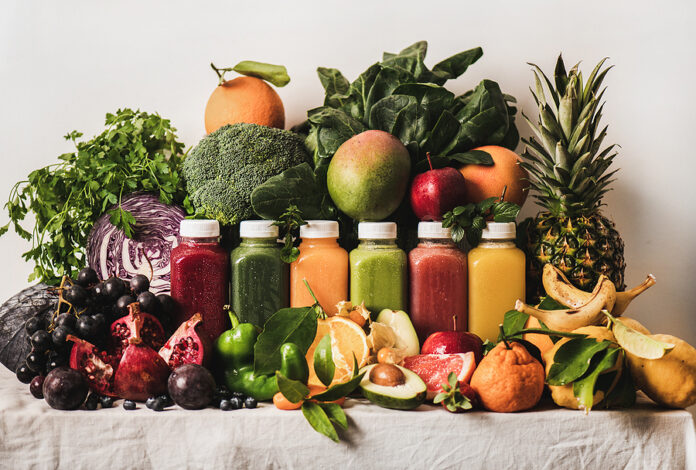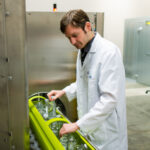
By Dr. Austin Lowder, Food Scientist Manager for High Pressure Processing at Avure Technologies, JBT Marel Corporation
Consumer preferences change over time and influence food and beverage manufacturing. In recent years, healthfulness has been a driver in preference, but it depends on the consumer’s income level. Per the International Food Information Council’s 2024 Food and Health Survey, consumers say “taste (85%) is very impactful on their food and beverage purchase decisions. Price remains the second most impactful (76%). Healthfulness falls in the middle (62%), followed by convenience (57%), and environmental sustainability (31%).”
While environmental sustainability has the lowest impact, nearly one-third of surveyed consumers do take it into consideration. Therefore, packaging that tackles sustainability and maintains, or even improves, taste would be a win-win. That solution exists.
High-pressure processing
High-pressure processing, or HPP, is a food processing technology that uses ultra-high pressure and purified, cold water to keep packaged food and beverages pathogen-free and fresher, longer without preservatives or chemicals.
HPP prevents unnecessary food waste and preserves flavor and nutrients that can otherwise be lost when exposed to high temperatures. By using extremely high water pressure (up to 87,000 PSI or 6,000 BAR), HPP inactivates harmful pathogens like Salmonella, E. coli, and Listeria monocytogenes. It is applied in the product’s final packaging, further eliminating the risk of contamination.
1. Preserve taste
After working with clients based around the world, Avure® Technologies conducted a study on the effects of HPP on nutritional components in fruit, vegetables, and herbs compared to thermal treatment. In juice studies, results concluded that HPP did not affect the antioxidant and anti-inflammatory bioactive compounds at different HPP treatment conditions, and there was no significant difference in the flavor of HPP-processed apple and orange juices after three months in storage compared to fresh juice after one week. Avure Technologies concluded that HPP products’ nutritional and sensory qualities are similar to fresh foods but are safer with a longer shelf-life.
Additional studies on HPP found the following:
- In partnership with the University of British Columbia, a microbiology and nutritional study found HPP to be effective in reducing the microbial load while not adversely altering the chemical and bioactive function of active nutritional constituents.
- In a collaborative project with CSIRO (Food Science Australia), HPP demonstrated little to no effect on sensorial properties in fruit and vegetable products.
- An additional study found that HPP-treated passion fruit puree retained better color quality and antioxidants compared to thermal processing.
2. Reduce food waste
Food waste is a worldwide problem, particularly in the United States. According to the U.S. Department of Agriculture (USDA), food waste is estimated to be between 30-40% of the total food supply. Retailers can play a key role in preventing food waste by offering products with a longer shelf-life.
For juices, HPP can extend refrigerated shelf life by at least 90 days, depending on packaging, which translates to increased distribution opportunities, reduced returns and sensitivity to cool chain abuse, and more efficient production scheduling. HPP also has important benefits for product quality and nutrient content. According to an article in Trends in Food Science and Technology, HPP helps orange juice retain 90% of its Vitamin C after 20 weeks of refrigeration. This effect can also be replicated with wet salads, dips, soups, and sauces.
3. Lower energy consumption
A study in the Journal of Cleaner Production found that, for a vegetable ready-to-eat meal with a 60-day shelf life, HPP had a 20% lower global warming potential when compared to thermal pasteurization by autoclave, even when HPP processing included a pre-cooking cycle. Further, HPP allows food processors to reduce or eliminate ingredients added solely for preservative effects, including chemicals that inhibit bacterial growth. Reduced ingredient usage means eliminating the environmental impacts associated with sourcing those ingredients.
Mechanically, HPP is also a more efficient packaging process. It requires less heat by using cold water, and 85% of that water is recycled for the next machine cycle.
Win win win
Consumer preferences will continue to change. Whether that is an emphasis on health, sustainability, or a new trend, food and beverage manufacturers will need to meet shifts in demand. HPP provides flexibility to package more food more sustainably while reducing waste without sacrificing taste and quality. HPP is a triple win.
 Austin Lowder is the Food Science Manager for High Pressure Processing at Avure Technologies, part of the JBT Corporation. He manages the Avure Food Lab in Erlanger, KY, which conducts shelf life and validation studies supporting high pressure processing operations and toll customers. He holds a masters in meat science from Texas A&M University and a Ph.D. in Food Science from Oregon State University.
Austin Lowder is the Food Science Manager for High Pressure Processing at Avure Technologies, part of the JBT Corporation. He manages the Avure Food Lab in Erlanger, KY, which conducts shelf life and validation studies supporting high pressure processing operations and toll customers. He holds a masters in meat science from Texas A&M University and a Ph.D. in Food Science from Oregon State University.









![[Report] 2025 State of Food Manufacturing: Digital Transformation](https://foodindustryexecutive.com/wp-content/uploads/2025/04/2025-State-of-Food-Manufacturing_-Digital-Transformation-324x160.png)